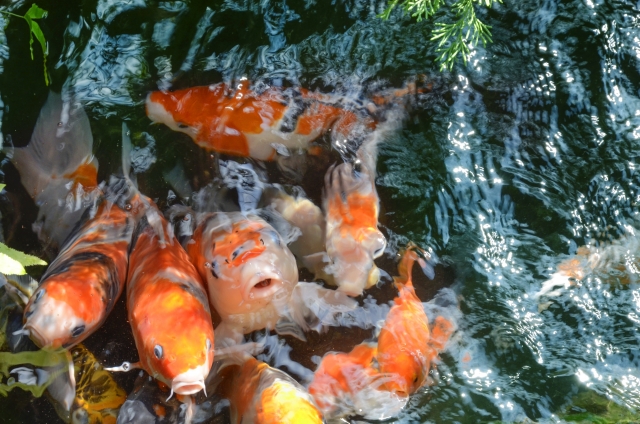<Sharing Kawaii Teatime pictures. カワイイお茶の時間の写真をご紹介>
Currently, I’m researching in graduate school in order to establish a new genre of Japanology; writing and lecturing Japanese culture in Japanese and English, original studies of mine. I’ve been reading English thesis regarding the studies of Japanese culture and analyzing the trend and came to know that ‘Kawaii’ is the front runner in the field.
現在大学院にて、日本文化を日本語と英語で綴り講義するという日本研究分野を確立しようと、独自の研究を進めているのだが、日本文化に関する多くの英語論文や研究動向を見てきて、今、日本文化論では「カワイイ」が流行の最先端を走っているのだということが分かってきた。
I’ve been fully aware of the fact the word of ‘Kawaii’ has attained a worldwide citizenship, but didn’t know that it is true in the academics and it has been studied so vigorously. And it’s so enticing to see the object that is stimulating appetite with deep and dense intellectual curiosities.
「カワイイ」は ‘Kawaii’ として、世界的な市民権を持つ言葉になっていることを体感してはいたけれど、それは学術の世界でも盛んに研究されている事柄なのだということをまざまざと知る様になると、俄然知的好奇心を刺激される考察対象になってきた。

Academia.edu is SNS service for researchers around the world, where academicians share their own studies. I also registered and often reading English thesis. There is a function of key-word research, I tried and found there are more than 110,000 thesis of ‘culture of cuteness’ and 5083 thesis of ‘Kawaii’.
世界中の研究者が自身の成果を公開するSNSで、Academia.eduというものがあり、私も登録してよく英語の論文をダウンロードして印刷して読んでいる。用語検索機能があり、試しに ‘culture of cuteness’ を入れると11万件以上の論文や書籍がヒットして、 ‘Kawaii’ という単語を入れると5083件の論文や書籍がヒットした。
Languages that are written are English, Spanish, French, Indonesian, Portuguese, Turkish, Polish, German, Italian, and Russian. In all parts of the globe in various languages ‘Kawaii’ is studied and researched with astonishing amount of energy. And a thesis written in 1995 seems to be the first crop of ‘Kawaii’ studies. The content is very profound and intriguing, so here I’d like to share.
書かれている言語も、英語、スペイン語、フランス語、インドネシア語、ポルトガル語、トルコ語、ポーランド語、ドイツ語、イタリア語、ロシア語、と、世界各地ありとあらゆる国々で「カワイイ」研究が驚くべき熱量を伴って行われている。そして、1995年に書かれた、まだ ‘Kawaii’ が国際語になる前の論文が ‘Kawaii’ 研究の初穂である様に思われ、その内容がとても面白いので、ここでご紹介したい。

*’CUTIES IN JAPAN’ Sharon Kinsella, University of Hawaii Press, 1995
Pay attention to the title word ‘CUTIES’, not ‘Kawaii’ yet. This thesis is being quoted 720 times or more, so it is likely that the expansion of ‘Kawaii’ started around the period with the cultural background. Now that ‘Kawaii’ is more common than ‘Cuties’ to describe Japanese cute culture, it is something. If you say ‘Cuties’ in America now, it means Japanese tangerines. Japanese tangerines are wrapped with much oil and the skin got thicker and sold as luxuries fruits in the US. Even good old Mikan orange can be a fashionable icon in a faraway country.
当時はまだ題名に ‘CUTIES’ を使い、 ‘Kawaii’ と書かれていないことに注目。この論文は被引用が720件以上ということで、この論文が書かれた頃より時代背景と共に、どんどん ‘Kawaii’ が広がって行ったのだと思しい。今はもう ‘Cuties’ とは言わずに ‘Kawaii’ の方が一般的になっていると思うと、少し感慨深い。ちなみに現在アメリカで ‘Cuties’ といえば、日本のみかんのことを指す。アメリカで日本のみかんはテラテラに油を塗られて、表皮に強度が加えられて、高級品として売られている。ところ変われば、みかんすらもお洒落な小道具となるのだ。
<Summary of the thesis>
<論文を要約>
‘Kawaii’ is used celebrating childlike, sweet, adorable, pure, innocent, simple, genuine, vulnerable, weak, and inexperienced social behaviors as well as physical appearances.
「カワイイ」とは、子供らしい、甘い、愛らしい、純粋な、無邪気な、単純な、真正の、傷つきやすい、弱い、経験を積んでいない、という意味を祝して使う、社会的な振る舞いや身体的特徴を指す。

Introducing Maruji (round characters) with a list of hiragana chart. (It was written as Maru-i ji, but it’s a mistake as a foreigner, I suppose) And a pop idol Sakai Noriko’s original words as Nori-P words; ‘kacchoii’ for ‘kakkoii’ as cool, ‘kana-P’ for ‘kanashii’ as sad, ‘ure-P’ for ‘ureshii’ as glad were introduced as well as handwritten emoji that I myself still use also. They are heart mark, peace sign, glasses, or waving a hand saying good bye. Didn’t recognize that those handwritten emoji are included in Maruji culture.
丸字の紹介、丸字表もあり。(表記の間違いで「丸い字」とされていたが、それは外国人ならではの間違いだろう)アイドルの酒井法子が使っていたノリピー語の「かっちょいい」「悲P」「嬉P」などの紹介もあり、手書き絵文字の紹介もあり。(私自身もそうだとは認識せずに使っている、ハートマークや、ピースサインや、メガネや、バイバイと手を振るイラスト文字は、丸字文化に含まれるのかと、新鮮に思われた)
Kawaii and Sanrio fancy goods are inseparable. The market of fancy goods was 10 billion yen market in 1990 (Japan Times January 5,1991). And many of those thesis are referring to Sanrio.
可愛いと言えば、サンリオのファンシーグッズが切り離せず、ファンシーグッズ市場は1990年には、100億円市場になったとのこと(Japan Times Janurary 5, 1991) 。また、多くの論文でサンリオについて言及がなされている。

Pink House the clothing industry had elements of cute, quirky, and funny in the clothes that are sold.
また、アパレルブランドのPink House は、可愛い、風変わり、おかしみ、という要素があった。
There is a magazine named ‘CUTiE’ targeting teenage girls. Sweet cakes and ice cream are associated with Kawaii and patisseries are designed like a country of fairy tales. They are petit, frilly, and Victorian style.
‘CUTiE’ という十代の少女を読者層にした雑誌がある。甘いケーキやアイスクリームは可愛いと結びつき、可愛いケーキ屋さんは妖精の様な御伽の国の様な作りで、小さくて、フリフリで、ヴィクトリア朝様式である。

Pop idols in the 80’s are Matsuda Seiko, Hikaru Genji, Kyon Kyon, and Onyanko Club. Silly games played in the TV show of ‘Yuyake Nyan Nyan’ also represented Kawaii culture. And centenarian twins of Kin san Gin san made a big boom. Both young and old are cute, and it requires a condition of being weak and incapable.
80年代のアイドル、松田聖子、光GENJI、キョンキョン、おニャン子クラブの「夕焼けニャンニャン」で行われていたふざけたゲームなども、可愛いを象徴する文化である。また、金さん銀さん、双子のおばあちゃんも大ブームになり、若きもお年寄りも可愛いとされ、その際、弱さと能力がないことが可愛いの要件となる。
Young girls and women act childish on purpose to be Kawaii, and they decorate their desk and room with something Kawaii, and they favor Kawaii fashion. The longing for Kawaii is resistance toward this suffocating, unfree, and tormenting society. ‘Kawaii’ is one element of pop culture that thrived richly in the last half a century in Japan. It is overwhelming and threatening traditional culture. ‘Kawaii’ is escaping from reality, and it’s uniting with nostalgia, fondness of foreign taste, romance, fantasy, and SF.
女の子や女性はわざと子供っぽく振る舞って可愛さを狙い、可愛いもので自分の机や部屋を飾り、可愛いファッションをする。可愛いものへの愛好は、この堅苦しく不自由で生き辛い社会への抵抗である。「カワイイ」はこの日本社会で、この半世紀ほど大きく栄えてきたポップカルチャーの要素であり、伝統文化を圧倒し脅かすものである。「カワイイ」は現実逃避的であり、郷愁、外国趣味、ロマンス、ファンタジー、SFと結びつく。

<consideration>
<考察>
As a Japanese viewpoint, the culture of ‘Kawaii’ is something I take it for granted like air. And in my opinion, ‘Kawaii’ is not only weak or incapable, it includes sincere efforts to make things come true, and confronting with such candid spirit, people are touched with the genuine attitude. I am also attracted to those pure energy as something ‘Kawaii’.
日本人としての視点からすると、「カワイイ」文化はあって当然の空気の様なものであり、「カワイイ」には弱さや能力のなさだけではなく、ひたむきに一心に努力する健気さも含まれており、一生懸命な姿が「カワイイ」と結びつき、その様な姿を目の当たりにすると、その人の発しているエネルギーに感動するということはよくあることだ。
In that sense ‘Kawaii’ is not dependent but autonomous, however a little meek. ‘Kawaii’ is one of the aesthetics and process that someone a little fragile strives hard to overcome the weakness. That’s the reason why people describe children as ‘Kawaii’.
その際の「カワイイ」は、依存的ではなく自律的でありながらもどこか頼りない。「カワイイ」は、弱き者がその弱さを克服して行こうと懸命に励む、一つの生き方としての美学であるのかもしれない。だから子供のことを「カワイイ」と人は言うのだろう。

The viewpoint of the author is analyzing Japanese culture form outside. If it were from Japanese point of view, there would have been blind spots here and there, and too challenging to dispute the social trend from this much multi angles. The studies of Japanese culture form the outside viewpoint teach us to observe things with a fresh manner and unique analysis, stirring deep interest. It is so much to learn.
また、この筆者の視点は、日本文化を外からの視点で見て分析して論じているので、日本人の視点だけでは盲点が随所にあり、ここまで深く多角的に社会の趨勢を論じていくことは難しかっただろうと思わせるものがある。外の視点から見る日本文化論は、新しいモノの見方、その分析方法を教えてくれ、興味を深く掻き立てられて、非常に学ぶものが多い。
Love and Peace.
参考文献、(論文)
* ‘CUTIES IN JAPAN’ Sharon Kinsella, University of Hawaii Press, 1995






















